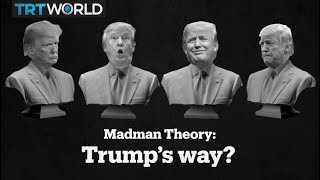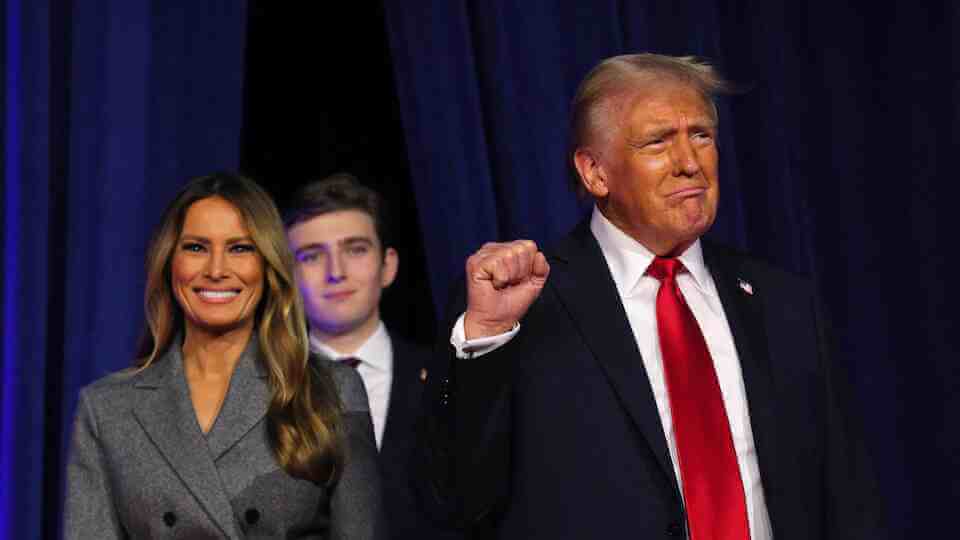Trump’s ‘Madman Strategy’: How Chaos Is Becoming a Global Weapon
Trump’s ‘Madman Strategy’ is more than a tactic. It’s a worldview—bold, chaotic, and built on risk. Surprisingly, parts of it seem to work.
Trump’s Madman Strategy is through threats, surprises, and diplomatic shocks, Donald Trump has reshaped the way foreign policy is played. This article explores his approach, how it works globally, and why leaders are reacting with unease.
Trumps Madman Strategy What it is?
Original idea came from President Nixon.
He wanted enemies to believe he might do anything—even act irrationally. That fear, he thought, would bring cooperation.
Now, Trump’s ‘Madman Strategy’ takes that concept to extremes.
His speech patterns often change. One day, he threatens war. The next, he talks peace.
He praises dictators while insulting longtime allies—keeping everyone on edge.
Rather than being random, this chaos is deliberate. It’s a tool of control, not confusion.
Trumps Madman Strategy is Iran Surprise: A Classic Madman Move
At first, Trump said he would pause military action against Iran. He implied negotiations might resume.
Soon after, bombs fell—without notice or warning.
The move stunned global leaders. Confusion spread quickly. Diplomatic responses came pouring in.
Yet Trump stood firm.
That was Trump’s ‘Madman Strategy’ in action: create false calm, then strike hard.
Rather than traditional diplomacy, it was high-stakes political theater.
Recommended by Nova News:
Trumps Madman Strategy Foreign Policy or Business Tactic?
This Trump’s global strategy often mirrors his boardroom style.
He treats world leaders like competitors in a negotiation. Pressure, leverage, and last-minute pivots dominate the playbook.
Instead of clarity, confusion becomes part of the game.
Also this approach echoes his business past. He hides his hand and bluffs until the final move.
Seen this way, Trump’s ‘Madman Strategy’ becomes less about nations and more about control.
But in international relations, mistakes risk lives—not just profits.
Trumps Madman Strategy Attacks, Insults, and Sudden Embraces
Trump broke with tradition from day one.
He praised Vladimir Putin while undermining NATO allies. Such moves shocked American partners.
At one point, he joked about annexing Canada. He even suggested using force to take Greenland from Denmark.
Worse, he questioned NATO’s Article 5—the clause that ensures collective defense.
Former UK Defence Secretary Ben Wallace said, “Article 5 is on life support.”
These moments weren’t accidents. They were part of a calculated pattern to shake the status quo.
Weaponization of Uncertainty

Experts argue that this unpredictability is intentional.
According to Peter Trubowitz from the London School of Economics, Trump’s foreign policy is tightly centralized. What do you think? Trump is working alone on his geopolitical strategy or together with Elon Musk?
Rather than team consensus, decisions reflect his personal mood and instinct.
That gives global diplomacy a new level of volatility.
Here lies the core of Trump’s ‘Madman Strategy’—make diplomacy emotional, personal, and impossible to predict.
Allies get nervous. Rivals stay on edge. Sometimes, that chaos pays off.
Does the Strategy Actually Work?
Answer depends on what success means.
In some ways, Trump’s ‘Madman Strategy’ changed conversations. It forced responses from world leaders.
However, damage followed. NATO grew weaker. Trust in American leadership eroded.
Critics called it “reckless improvisation” rather than clever strategy.
Still, even adversaries like Kim Jong-un came to the table.
Why? Because Trump’s unpredictability made threats seem real. Fear replaced diplomacy.
Allies Are Not Exempt
Friends of the U.S. felt the sting too.
His publicly questioned defense agreements. He often criticized Canada and Germany by name.
Leaked White House texts revealed disdain toward European partners.
In one message, Defense Secretary Pete Hegseth wrote,
“I fully share your loathing of European freeloaders. PATHETIC.”
These weren’t just offhand remarks. They reflected real policy positions.
He treated allies as business assets—negotiable, not permanent.
This approach shifted America’s global alliances.
Madman vs. Mastermind: Lessons from History
“Madman” tactic isn’t new—and history shows mixed results.
Nixon used it during the Vietnam War but failed to achieve peace.
Other leaders who embraced chaos often lost public trust or triggered greater instability.
Why did Trump’s ‘Madman Strategy’ seem more effective?
Modern media landscape rewards disruption. Every tweet and shock gets amplified.
What used to be whispers in back rooms now dominates headlines worldwide.
Once Trump thrived in that environment.
Cost of Chaos
Disruption has a price.
America’s reputation took a hit. Allies grew distant. Rivals became bolder.
Critics warn the fallout could last decades. Restoring trust won’t be easy or fast.
Although Trump’s ‘Madman Strategy’ brought visibility, it also caused exhaustion.
Global leaders grew tired of guessing his next move. Some began turning elsewhere.
Open doors for competitors like China and Russia to expand influence.
Recommended by Nova News:
Will the Strategy Continue?
Even outside office, Trump remains politically influential.
Many Republicans still adopt his tone and tactics. His voice shapes debates.
The unpredictability he championed still echoes in U.S. foreign policy.
Today, Trump’s ‘Madman Strategy’ feels less like an experiment—and more like his trademark.
Supporters applaud it. Critics fear it. The media keeps chasing it.
Whether it strengthens America or further divides it remains uncertain.
Final Thoughts: Chaos with a Purpose?
Unpredictability can be powerful—but it’s also risky.
Trump’s ‘Madman Strategy’ relies on fear, disruption, and inconsistency. It breaks old rules without building new ones.
Short-term success may follow, but lasting trust rarely grows from confusion.
World leadership demands more than boldness. It demands reliability.
Without trust, even the most strategic chaos eventually collapses.
Key Takeaways
America’s global trust suffered and may take years to rebuild.
Trump’s ‘Madman Strategy’ thrives on calculated unpredictability.
The idea mirrors Nixon’s tactics but fits today’s media age.
Both allies and rivals were targets of his chaos.
The results? Mixed—sometimes bold, often damaging.

